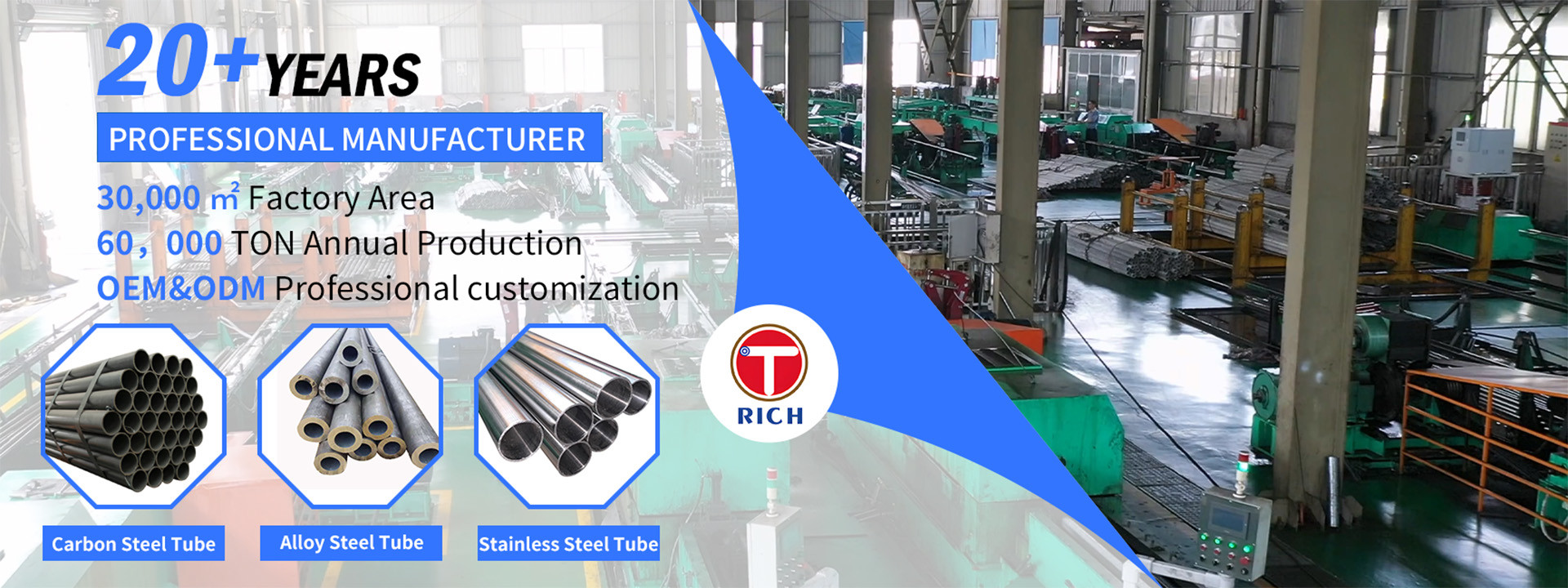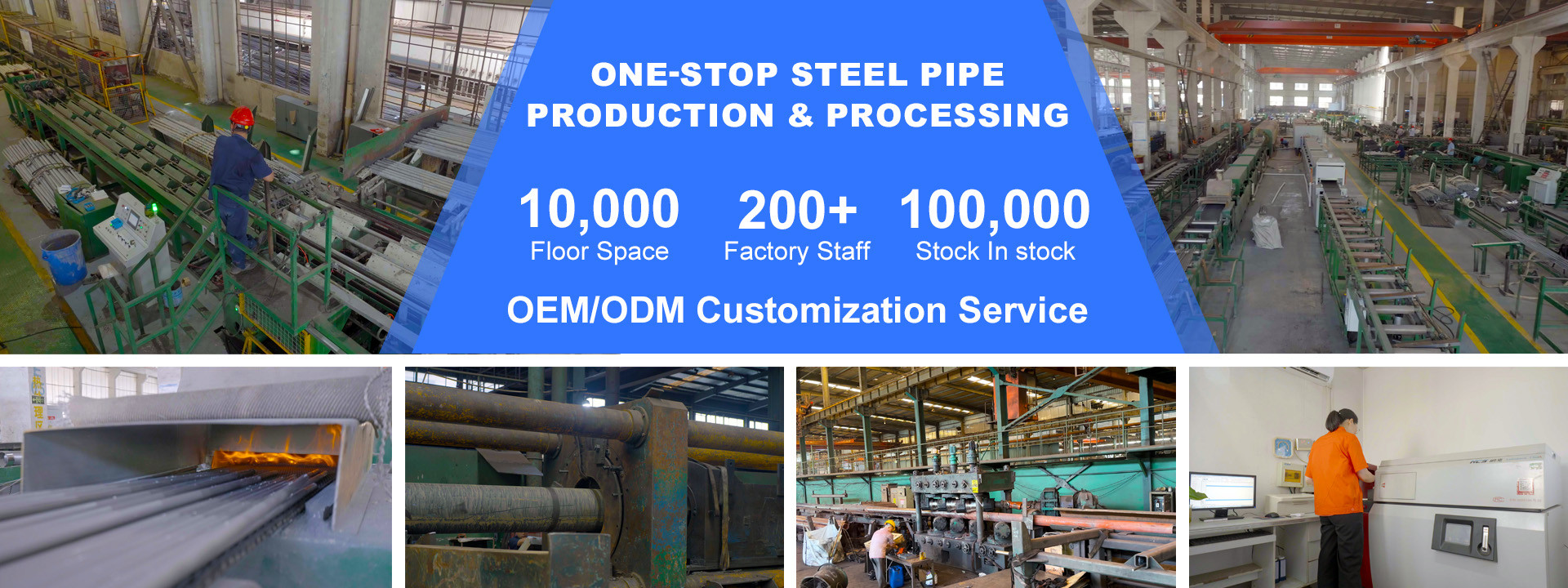What is the use of alloy steel pipe?
2025-12-19
What Is the Use of Alloy Steel Pipe?
As process plants run hotter, cleaner, and at higher pressures, piping has to do more than “carry fluid.” It has to hold shape under sustained stress, resist oxidation and corrosion, and stay reliable through thermal cycling. That’s exactly where alloy steel pipe earns its keep.
what is alloy steel pipe used for?
1) High-temperature steam and hot utility systems
When your line is exposed to sustained heat (think boiler-related piping, superheated steam, hot reheat circuits, high-temp headers), the key enemy is creep—slow deformation under stress over time. Alloy steel grades are designed to hold mechanical strength much better in these conditions than plain carbon steel.
2) High-pressure pipelines where deformation risk is unacceptable
In high-pressure service, your concerns shift to yield strength, integrity, and safety margins. Alloying additions (commonly Cr, Mo, V, Ni depending on grade family) support higher strength and better stability, which helps reduce deformation and failure risk when pressure is not forgiving.
3) Hot, oxidizing, or mildly corrosive process environments
At elevated temperatures, oxidation (“scaling”) accelerates and many corrosive reactions become more aggressive. Chromium-bearing alloy steels improve resistance to oxidation, helping keep the pipe wall healthier for longer—especially in hot process zones.
4) Equipment-connected piping that must be formable and weldable
A practical reason alloy steel pipe shows up everywhere: many projects require bending, flanging, and welding on site. Specifications for high-temperature alloy pipe explicitly consider these fabrication needs—but only if heat treatment and welding procedures are handled correctly.
What makes alloy steel pipe different
If carbon steel pipe is the “daily driver,” alloy steel pipe is the heavy-duty truck: it costs more, but it keeps working when the road turns into a mountain pass.
Higher-temperature strength → less softening and less permanent distortion over time.
Better creep resistance → crucial when temperature + stress last for years, not hours.
Improved oxidation resistance (often via chromium) → reduces scaling in hot service.
More demanding fabrication controls → heat treatment and welding discipline become part of the “product,” not an afterthought.
View More
Which Is Better, ERW or EFW?
2025-12-12
Which Is Better, ERW or EFW? A Practical Perspective for Pipe Buyers
When selecting welded steel pipes, the question “Which is better, ERW or EFW?” comes up frequently. The honest answer is not about which process is universally superior, but which one is more suitable for your specific application. As someone who has worked across manufacturing, inspection, and project delivery in the steel pipe industry, I’ll break this down in a clear, experience-based way.、
From widely accepted technical papers, manufacturing guidelines, and real project feedback, the following points are consistently emphasized and reliable:
Manufacturing principle differences between resistance welding and fusion welding
Applicable standards (ASTM, ASME, API, EN) and how each process fits them
Diameter and wall thickness limits for ERW and EFW
Mechanical performance and weld integrity under pressure and temperature
Cost efficiency vs. performance trade-offs in industrial projects
Typical application scenarios such as pipelines, structural use, boilers, and pressure systems
These insights form the backbone of the analysis below.
Understanding the Two Technologies
ERW (Electric Resistance Welded) Pipes
ERW pipes are produced by forming steel strip into a tube and welding the seam using high-frequency electrical resistance heat, without filler metal.
Key characteristics:
Uniform weld structure
Excellent dimensional accuracy
High production efficiency
Strong consistency for mass production
ERW technology has matured significantly, and modern ERW pipes are far more reliable than those produced decades ago.
EFW (Electric Fusion Welded) Pipes
EFW pipes are made from steel plate or coil, with the seam welded using arc welding methods (often submerged arc welding).
Key characteristics:
Capable of very large diameters and thick walls
Deep weld penetration
Flexible for custom specifications
Often chosen for demanding mechanical or thermal conditions
EFW is typically selected when size or performance requirements exceed ERW capabilities.
FAQ
1. Is ERW strong enough for pressure applications?
Answer:
Yes—within its designed range. Modern ERW pipes that comply with recognized standards perform reliably in oil & gas transmission, water pipelines, and structural pressure systems. The weld zone is heat-treated and inspected inline, ensuring consistency.
However, when extreme pressure, thick walls, or very large diameters are involved, EFW may offer a greater safety margin.
2. Why is EFW usually more expensive than ERW?
Answer:
EFW involves:
Slower production speed
Higher energy consumption
More welding material and inspection steps
This results in higher unit cost. That said, the price reflects capability, not inefficiency. When a project demands oversized dimensions or special mechanical properties, EFW is often the only practical solution.
3. Can ERW replace EFW to reduce costs?
Answer:
In many standard applications, yes. Advances in ERW technology have allowed it to replace EFW in numerous projects without compromising safety or performance.
But replacement should never be automatic. If a design requires:
Very thick walls
High-temperature service
Severe cyclic loading
Then EFW remains the more appropriate choice.
Side-by-Side Perspective
Aspect
ERW
EFW
Diameter range
Small to medium
Medium to very large
Wall thickness
Thin to moderate
Moderate to very thick
Production efficiency
High
Lower
Cost
More economical
Higher
Custom flexibility
Limited
High
Typical use
Pipelines, structural, water
Pressure systems, large pipelines
Final Conclusion
There is no absolute winner between ERW and EFW.
Choose ERW when consistency, efficiency, and cost control are priorities within standard size and pressure ranges.
Choose EFW when your project pushes the limits of diameter, wall thickness, or operating conditions.
From a professional standpoint, the best decision is always driven by service conditions, applicable standards, and long-term reliability, not by price alone.
If selected correctly, both ERW and EFW pipes are excellent solutions—each excelling in the environment they were designed for.
View More
What Is a Wound Finned Tube?
2025-11-21
What Is a Wound Finned Tube?
A wound finned tube is a metal tube (often carbon steel or stainless steel) with a thin metal strip (“fin”) helically wound around the outside.
You can picture a bare tube wearing a tightly wrapped metal ribbon. That ribbon creates much more external surface area, so the tube can transfer more heat between the fluid inside and the air or gas outside. This makes wound finned tubes very common in:
Air-cooled heat exchangers
Gas coolers and condensers
Boiler air preheaters and waste heat recovery units
2. How Is It Made and What Are the Key Features?
Manufacturing (simplified):
Start with a straight tube: cut, cleaned, and checked.
Feed a long strip of fin material (aluminum, copper, or steel).
The strip is tension-wound in a spiral around the rotating tube.
Depending on type, the fin may be:
Simply tension-locked (L-fin, LL-fin)
Crimped or formed for a stronger mechanical bond
Locally welded or soldered for extra security
Tube is straightened, cut to length, sometimes U-bent, and inspected.
Main advantages for end users:
High heat transfer on the air side (large fin area).
Compact equipment – fewer tubes or smaller bundles for the same duty.
Cost-effective compared with fully welded or extruded fins in moderate conditions.
Flexible design – tube size, fin height, fin pitch, tube and fin materials can be tailored.
Typical limitations:
Not ideal for very high temperatures or extreme thermal cycling.
Needs proper fin spacing and material selection in dirty or corrosive environments.
3. Extended Q&A for End Customers
Q1. When should I choose wound finned tubes instead of plain tubes?
Use wound finned tubes when:
You have liquid or gas inside the tube and air/gas outside, and the air side is the main resistance to heat transfer.
Operating temperatures are low to medium, and mechanical loads are not extreme.
You want good thermal performance at a reasonable cost.
Plain tubes are better when the outside is very dirty and hard to clean or when fins bring little benefit. For very high temperatures or severe vibration, welded or extruded fins are usually safer choices.
Q2. How do I choose tube and fin materials?
Think in three steps:
Tube material
Carbon steel: economical, good for many oil, gas, and utility duties.
Stainless steel or special alloys: for corrosive or high-temperature media.
Fin material
Aluminum: most common in air coolers, light and highly conductive.
Copper: better conductivity and corrosion resistance, but more expensive.
Steel / stainless fins: for high-temperature or corrosive atmospheres.
Fin type (within wound fins)
L-fin / LL-fin: standard tension-wound options, good balance of cost and performance.
KL / KLM and similar: stronger mechanical lock, better contact and tube protection, slightly higher cost.
Providing your supplier with the process fluid, temperatures, air/gas composition, and environment (onshore/offshore/coastal) will let them recommend a safe and economical combination.
Q3. What should I pay attention to in operation and maintenance?
Key points:
Fouling on the fin side
Dust or fibers can clog the fin gaps and reduce capacity. Plan regular cleaning using air blow, washing, or chemicals suitable for the fin material.
Corrosion
In coastal or chemically aggressive atmospheres, consider coated aluminum fins or stainless/steel fins and corrosion-resistant tubes. Inspect periodically for fin damage or tube corrosion.
Thermal cycling and vibration
Frequent start/stop or strong vibration can stress the fin bond. If your service is severe, discuss fin type and support design carefully with your supplier.
Replacement strategy
Design for easy bundle replacement and track performance over time (inlet/outlet temps, fan power) so you can predict end-of-life instead of being surprised.
View More
what Is a Heat Exchanger Tube?
2025-11-14
1. What Is a Heat Exchanger Tube?
A heat exchanger tube is a specialized tubular product designed to transfer heat between two media—either liquids, gases, or a combination of both—without allowing them to mix. These tubes are typically made from stainless steel, copper alloys, titanium, carbon steel, or nickel-based alloys, depending on the application environment.
Their role is crucial in ensuring efficient heat transfer in:
Shell and Tube Heat Exchangers
Condensers
Evaporators
Boilers
Chillers
Oil coolers
A high-quality heat exchanger tube must have:
Excellent thermal conductivity
Corrosion resistance (especially in seawater or chemical environments)
High pressure tolerance
Smooth internal surface for optimum heat transfer
Long service life with low maintenance needs
Because the tube is the “core component” of heat exchangers, choosing the right material and size directly affects system efficiency and lifetime.
2. Useful Extractable Information (Summarized, Without Revealing Websites)
From the three hidden reference sources, the key usable concepts include:
Heat exchanger tubes have strict dimensional tolerances to maintain consistent heat transfer.
Different materials resist corrosion differently (e.g., 316L stainless steel vs. titanium).
Tubes may be seamless or welded depending on pressure and temperature requirements.
Surface finishing and cleanliness directly affect performance.
Tubes are widely used in power plants, chemical plants, refrigeration, shipbuilding, and food processing.
3. Three Effective Expanded Questions & Detailed Answers
Q1: How do I choose the right material for heat exchanger tubes?
Answer:
Material selection depends largely on the operating environment:
For seawater or high-chloride content:
Titanium, 2205 Duplex Stainless Steel — excellent pitting and corrosion resistance.
For high-temperature chemical processing:
Alloy 625, Alloy 825 — strong resistance to acids and elevated temperatures.
For general HVAC and refrigeration:
Copper or stainless steel (304/316L) — easy to process and cost-effective.
For boiler or superheater tubes:
Carbon steel or alloy steel — withstand high pressure and heat.
Choosing improperly can lead to corrosion failure, reduced efficiency, or costly downtime. Professionals should evaluate temperature, pressure, corrosive media, and budget before making a decision.
Q2: Are seamless or welded heat exchanger tubes better?
Answer:
Both are widely used, but they serve different purposes:
Seamless tubes:
Ideal for high pressure, high temperature, and critical applications
No weld seam means stronger structural integrity
Welded tubes:
Cost-effective
Good for low- to medium-pressure applications
Modern welding (TIG/laser) makes weld seams extremely reliable
For power plants, petrochemical units, and critical condensers, seamless tubes are often preferred.
For HVAC, food processing, and low-pressure tasks, welded tubes offer excellent value.
Q3: What factors affect the lifespan and performance of heat exchanger tubes?
Answer:
The durability of heat exchanger tubes is influenced by:
Fluid Quality – High chloride, fouling substances, or acidic conditions accelerate tube corrosion.
Operating Temperature & Pressure – Exceeding design limits causes thinning, cracking, or creep damage.
Tube Surface Cleanliness – Scaling or deposits reduce heat-transfer efficiency by up to 30–40%.
Material Grade – Using the wrong alloy can shorten service life dramatically.
Maintenance Practices – Regular cleaning, anti-fouling coatings, and periodic inspection extend longevity.
Proper material selection combined with correct operation can extend tube life from 5 years to over 20 years, depending on conditions.
4. Conclusion
Heat exchanger tubes are not simply pipes—they are precision-engineered components that directly determine the performance and efficiency of industrial heating and cooling systems. For end-users, understanding the basics helps avoid costly mistakes when selecting tubing.
View More
TORICH's debut at the 31st Metal-Expo 2025 concluded successfully on the first day: Finned tubes and coils attracted significant attention.
2025-11-12
TORICH's debut at the 31st Metal-Expo 2025 concluded successfully on the first day: Finned tubes and coils attracted significant attention.
TORICH successfully concluded its first day at the 31st Metal-Expo 2025 in Moscow. The company showcased a variety of specialized steel pipe products for the automotive, chemical, and energy industries, with finned tubes and coils being the focus of attention. We welcome you to visit our booth 2E55 to speak with our sales manager or contact us via email at sales@steel.
Day 1 Highlights
Finned Tubes: Enhanced heat exchange efficiency, suitable for chemical and energy applications; their corrosion resistance and stability were recognized by visitors.
Coiled Tubing: Continuous long lengths and small bending radii facilitate installation and maintenance in complex environments, attracting in-depth inquiries from numerous on-site customers.
Continuous Professional Visits: Several industry customers visited the booth, demonstrating strong interest in application solutions, delivery times, and quality control.
Exhibition Information
Exhibition: Metal-Expo 2025 (31st Metal Expo)
City: Moscow, Russia
Booth Number: 2E55
Contact: sales@steel-tubes.com
at last
We welcome you to visit 2E55 to discuss your needs, or email sales@steel-tubes.com to request information, schedule a product selection and technical evaluation.
View More






